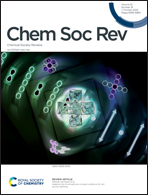Surface-modified bacteria: synthesis, functionalization and biomedical applications
Abstract
The past decade has witnessed a great leap forward in bacteria-based living agents, including imageable probes, diagnostic reagents, and therapeutics, by virtue of their unique characteristics, such as genetic manipulation, rapid proliferation, colonization capability, and disease site targeting specificity. However, successful translation of bacterial bioagents to clinical applications remains challenging, due largely to their inherent susceptibility to environmental insults, unavoidable toxic side effects, and limited accumulation at the sites of interest. Cell surface components, which play critical roles in shaping bacterial behaviors, provide an opportunity to chemically modify bacteria and introduce different exogenous functions that are naturally unachievable. With the help of surface modification, a wide range of functionalized bacteria have been prepared over the past years and exhibit great potential in various biomedical applications. In this article, we mainly review the synthesis, functionalization, and biomedical applications of surface-modified bacteria. We first introduce the approaches of chemical modification based on the bacterial surface structure and then highlight several advanced functions achieved by modifying specific components on the surface. We also summarize the advantages as well as limitations of surface chemically modified bacteria in the applications of bioimaging, diagnosis, and therapy and further discuss the current challenges and possible solutions in the future. This work will inspire innovative design thinking for the development of chemical strategies for preparing next-generation biomedical bacterial agents.



 Please wait while we load your content...
Please wait while we load your content...